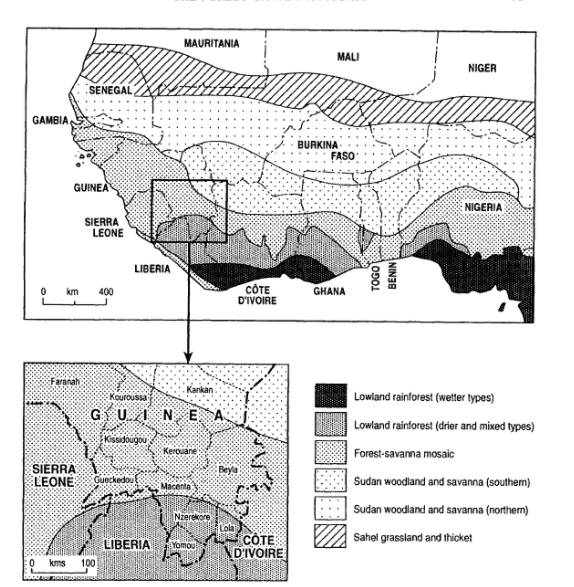Challenging Deforestation Interpretations
In my previous post I looked at how land use change is connected to a changing climate, biodiversity and water. I tried to give a general sense of what happens as thresholds are crossed and the impacts of land use change. However it is important to realise that there is no one formula and depending on the circumstances differing impacts can be experienced. That is why our preconceptions about land use change are not always accurate and that interactions are complex.
A great example of this is shown in the work of Leach and Fairhead (2000) who used examples from West Africa to assess the relationship between population increase and deforestation.
They argued that neo-Malthusian ideas lead us to assume that as population increase results in a loss of forest due to the expansion human activities. Whereas neo-boserupian ideas assume that an advancement of technology and methods to provide for populations without straining resources will come about. Instead Leach and Fairhead (2000) recommend using a perspective which looks at social aspects and differences in the way people give importance to the environment and resources, how different institutions manage resources and the different ecological responses to land use.
In both the Wenchi district- Ghana and the Kissidougou prefecture- Guinea, a mosaic pattern of forest and savanna can be seen. It is expected that with anthropogenic practices, forests will be converted into savanna (especially when thinking from a traditionally 'European' perspective as this is what happened in many areas Europe as population increased), this has occurred in both locations however there has also been an expansion of forested area. The cause for this unusual dynamic is mainly as a result of farming practices which allow the diverse forests to regenerate. These practices are not seen when new famers immigrate to the area as social practices differ, emphasising the point that social differences are important when looking at the outcome of land cover change. In Guinea the islands of forest around settlements was assumed to be made by removing forest between the settlements as populations increased, although this was true at one point in time, the forest that was there was initially planted by groups in order to represent unity and as a defence against fire. Current practices maintain these forest islands and instead of forest areas disappearing they have been shown to have increased by 40% since the 1950s. These studies further highlight how complicated land use change is and like Leach and Fairhead (2000) suggest, many factors have to be considered when looking into land cover change.



Comments
Post a Comment